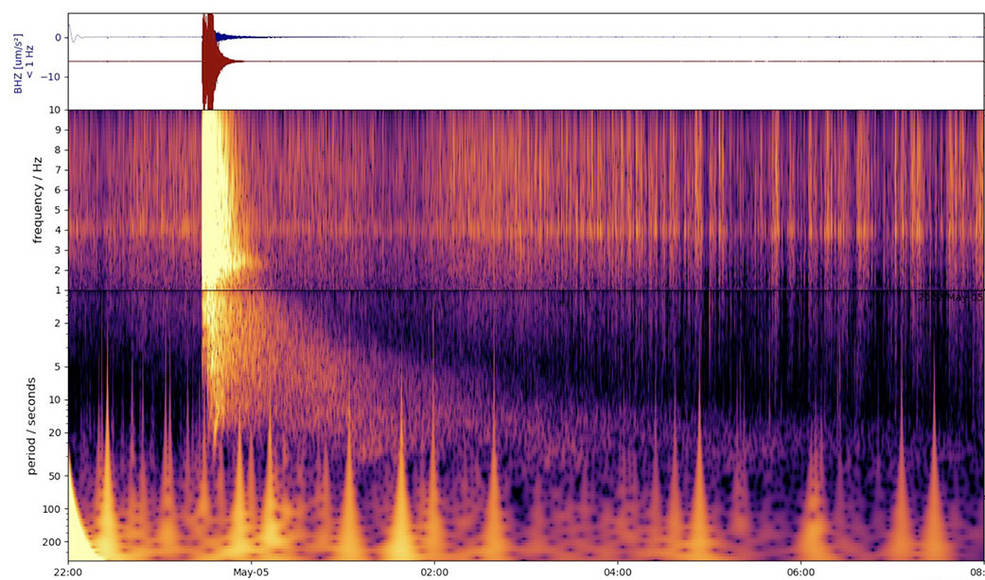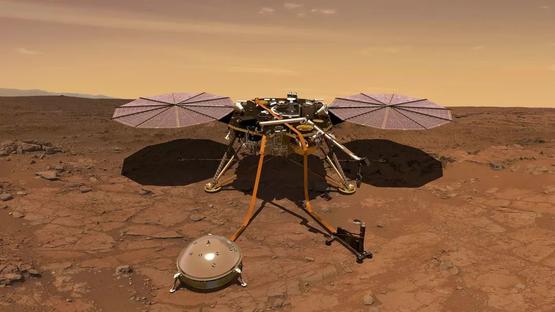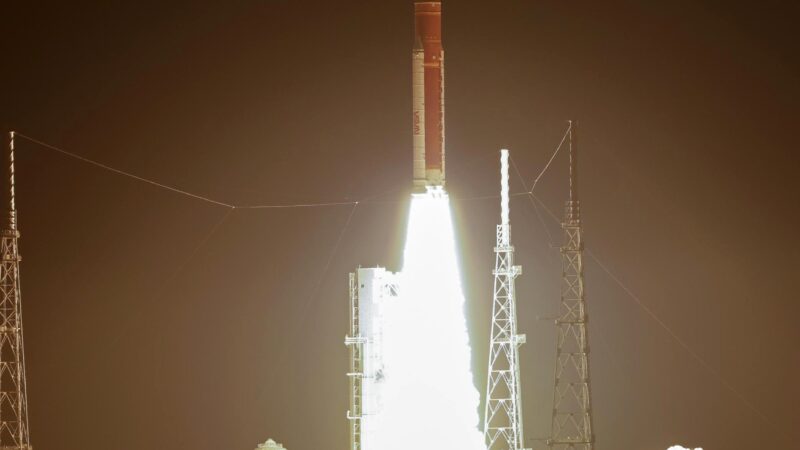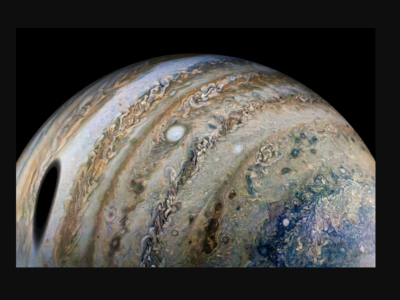A ‘Monster Quake’ on Mars is Recorded by the NASA InSight Lander
The quake estimated to be of magnitude 5 occurred on May 4, the 1,222nd Martian day, NASA said in a statement.
This adds to the catalog of more than 1,313 quakes InSight has detected since landing on Mars in November 2018. The largest previously recorded quake was an estimated magnitude 4.2 detected Aug. 25, 2021.

This spectrogram shows the largest quake ever detected on another planet.
InSight was sent to Mars with a highly sensitive seismometer, provided by France’s Centre National d’Études Spatiales (CNES), to study the deep interior of the planet.

Insight’s seismometer

A mockup of Insight dropping the seismometer
There is information about the music in the vibration of the concert hall, and there is information about the earth in the vibration of the earth too. Insight’s primary responsibility is to receive and confirm this information when quakes occur in the Martian crust, report it back faithfully, and give humans the opportunity to decipher the internal structure of a planet.
Seismic waves will propagate and bounce in the interior of Mars, thus reflecting the three-dimensional structure of the interior of Mars, basically similar to the principle of using ultrasound to examine the interior of the human body. With these signals, humans can see the internal structure of the Martian crust: how thick is the crust and mantle? What is the composition of its crust and mantle? Are there more complex structures inside the crust and mantle? And so on.

Staff debugging the Insight
The ultimate goal of scientists is not actually to study the structure of Mars, their real ambition is to figure out the message behind this information, the story behind the story. For example, through the internal structure of Mars, further speculation on the early evolutionary history of the solar system.
“Since we set our seismometer down in December 2018 , we’ve been waiting for ‘the big one’,” said Bruce Banerdt, Insight’s principal investigator at NASA’s Jet Propulsion Laboratory in Southern California which leads the mission, in the statement.
“This quake is sure to provide a view into the planet like no other. Scientists will be analysing this data to learn new things about Mars for years to come,” he added.
This quake could be of extraordinary significance and could be an important step in the study of the solar system by mankind

Our Solar System
Reference:
[1]NASA
[2]CNES











Incredible